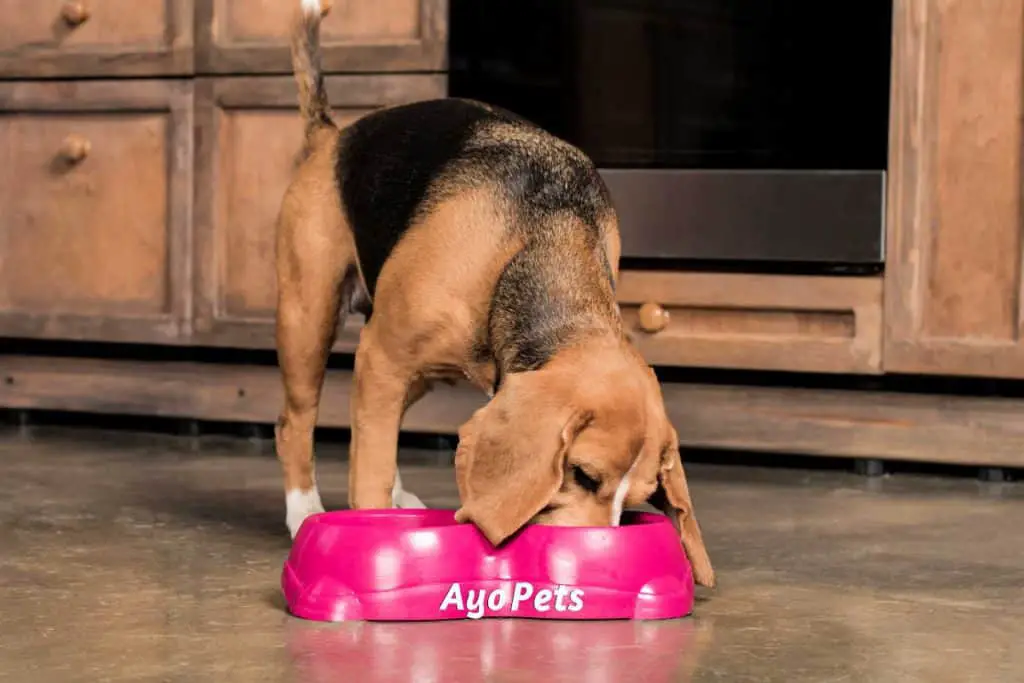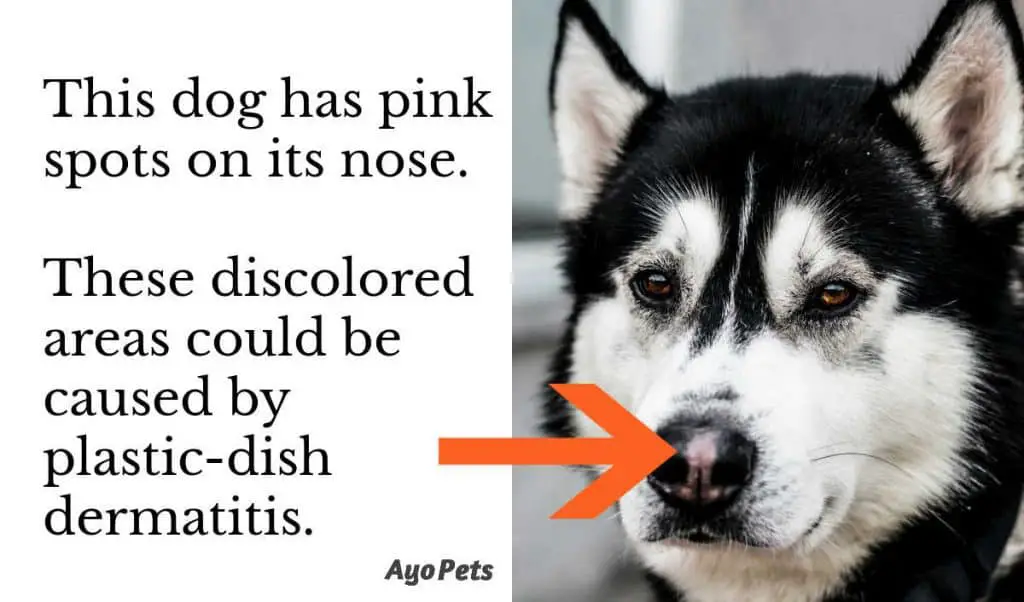Why plastic bowls may not be safe for dogs

Some dogs are allergic to plastic bowls
Some dogs are allergic to or become allergic to the plastic in a dog bowl. These dogs might be allergic to the type of plastic, or to one of the components used to make or dye the bowl.
When a dog that is allergic to plastic comes into contact with a plastic dog bowl, the dog gets contact dermatitis.
Contact dermatitis simply means that the skin becomes irritated and inflamed wherever it touches the thing it’s allergic to.
This dermatitis could show up as red skin, small bumps, blisters, cracked skin, raised itchy areas, ulcers, or a rash on the parts of the dog that touch the plastic bowl.
The dog could get dermatitis on its nose, around the mouth, along the chin, and even on its paws if the dog touches the plastic with its feet.

Some plastics have a chemical in them called p-benzylhydroquinone. This chemical affects the body’s ability to make melanin. More melanin gives a dog darker skin and less melanin makes the skin lighter. It’s melanin that gives many dogs a dark black nose and lips.
A dog that is allergic to plastic and comes into direct contact with this chemical may lose some color in their nose and/or lips. These dogs often get pink, discolored patches on their nose or mouth.
This condition is called plastic-dish dermatitis because it is caused by plastic dishes specifically.

The simplest way to treat doggy dermatitis at the first sign of it is to remove the source of the trouble: plastic bowls.
If your dog has any lumps, rashes, discolored areas, or blisters on its face or neck, replace your dog’s plastic dishes with ceramic bowls immediately (some dogs are also allergic to the nickel in steel bowls, so avoid these if your dog is showing signs of having allergies).
If the skin condition does not clear up on its own, you’ll need to see your veterinarian as your dog might be allergic to something else or have another skin condition, such as canine acne or vitiligo.
Open your dog’s mouth and remove any plastic present.
Regardless of how much plastic your dog has already eaten, you don’t want him to swallow any more. Make sure that none of the plastic is stuck between his teeth or stuck to the roof of his mouth.
If you don’t feel comfortable or safe putting your hands in your dog’s mouth, just hop in the car and head over to the vet.
It’s important to ensure that your dog’s mouth is plastic-free, but you don’t want to complicate matters by getting your fingers nipped.
Warning: Do Not Eat/Drink from Plastic! (2018)
There are many types of dog bowls on the market but are the plastic bowls safe for your dog, who will be eating and drinking out of these bowls each day? Plastic bowls are very popular with dog owners so this is an important question to answer.
I did some digging to find out if plastic bowls are safe for dogs and it turns out that:
Bowls that are made from high-quality, food-grade plastic are considered safest for dogs. Low-quality plastic, wear and tear, allergies, and dogs that like to chew can make plastic bowls unsafe for a dog. Every type of bowl has drawbacks, so if your dog likes plastic buy the best quality you can afford and manage the risks of plastic bowls.
Plastic bowls are a popular choice with dog owners because they are inexpensive, lightweight, and long-lasting. But plastic often gets a lot of criticism in the media and from advocacy groups.
There are actually benefits and risks with each type of dog bowl and who shares the dog bowl and who shares the dog bowl . Knowing the risks associated with plastic bowls and what to look for will help you decide if you want to use plastic bowls and how to minimize these risks, to keep your pooch happy and healthy.
Let’s look at all the reasons why plastic dog bowls might not be considered ‘safe’ for dogs and what we can do to manage these risks.